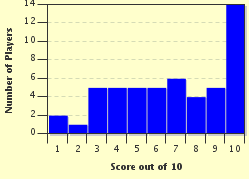Quiz Answer Key and Fun Facts
1. When you visit Kyrgyzstan you won't be travelling on what mode of transportation?
2. The flag of Kyrgyzstan includes a golden sun on a red background. The sun image has forty rays emanating from its center that are symbolically important. What do the forty rays of the Kyrgyzstan flag represent?
3. What form of ecologically friendly power supplies over 75% of Kyrgyzstan's electrical energy?
4. The national symbol of Kyrgyzstan is what bird of prey, that is also the largest of the falcon species.
5. Kyrgyzstan's geography is dominated by the Tian Shan mountains that run along its southern border with China. Appropriately, as you look up at the imposing peaks, I ask what does Tian Shan mean in Chinese?
6. Kyrgyzstan is one of the world's leading producers of mercury ore. However, nearly all of the country's mercury is exported to what large neighboring country?
7. Tash Rabat is the remains of a 15th century caravanserais (traveler's station) that traverse the rugged Tian Shan mountains. Caravanserais, like Tash Rabat, helped spur trade along what famous trade route that linked Europe with the rich markets of China?
8. Lake Issyk-Kul is the largest lake in Kyrgyzstan and one of the largest mountain lakes in the world. Which of these statements about Lake Issyk-Kul is NOT true?
9. The Suleyman Throne (Dom Babura in Kyrgyz), a sacred site to Muslims, overlooks the second largest city in Kyrgyzstan. What is this ancient city in Eastern Kyrgyzstan?
10. Bishkek, Kyrgyzstan's capital was renamed by the Soviet Union to honor an early Bolshevik General. What was Bishkek's name from 1926 until 1992?
Source: Author
adam36
This quiz was reviewed by FunTrivia editor
Tizzabelle before going online.
Any errors found in FunTrivia content are routinely corrected through our feedback system.

